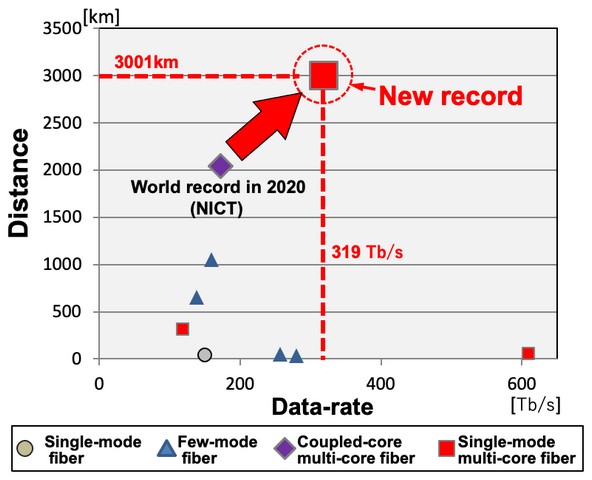Japan’s 4-Core Optical Fiber Network
Researchers at the National Institute of Information and Communications Technology (NICT) in Japan have developed a new 4-core optical fiber that delivered internet speeds of up to a whopping 319 terabytes per second (Tbps). Yeah, it is almost double the previous record of 178 Tbps, which was reportedly recorded in August last year.
The researchers released a press note to demonstrate their achievement recently. So, as per the press release, “NICT has built a long-distance transmission system around a 4-core optical fiber with a standard cladding diameter to exploit wider transmission bandwidth.” The researchers upgraded the fiber optic line with four cores. A standard internet cable, for those unaware, uses a single-core system.
The researchers also note that the sent information and data did not deteriorate or slow down the internet speed even when they were transferred over long distances of as far as 3,001 km. However, it is worth mentioning that the long-distance system was simulated in a lab by the researchers using coiled cabling.
What Can You Do with 319 Tbps Internet Speeds
Now, for those wondering what could internet speeds that high enable you to do, let me give you a brief idea. As Engadget notes, you can download more than 7,000 high-definition movies in just one second with 319 Tbps of internet speed. So, as you can imagine, with such high-speed internet, you can download all the movies on Netflix’s library, which contains approximately 3,781 movies according to RealGood, in less than a second. However, the researchers did not develop the 4-core optical fiber to let you download entire libraries of movies and TV shows. They note that the high-speed internet network is developed for transferring huge amounts of relevant data across long distances. Moreover, the researchers also mention that the 4-core optical fiber system needs more refinements before being deployed to the real world. Plus, developing such a network on a large scale can become pretty expensive. However, the good news is that the new 4-core lines can fit within “standard cladding”, which essentially means that it can be supported by the existing infrastructure. So, going forward, the researchers will continue to work on the new system. Nonetheless, it would be sometime before we see such high-internet speeds become standard in the real world. And when that day comes, you would be able to download all the movies, TV series, and games in no time.

